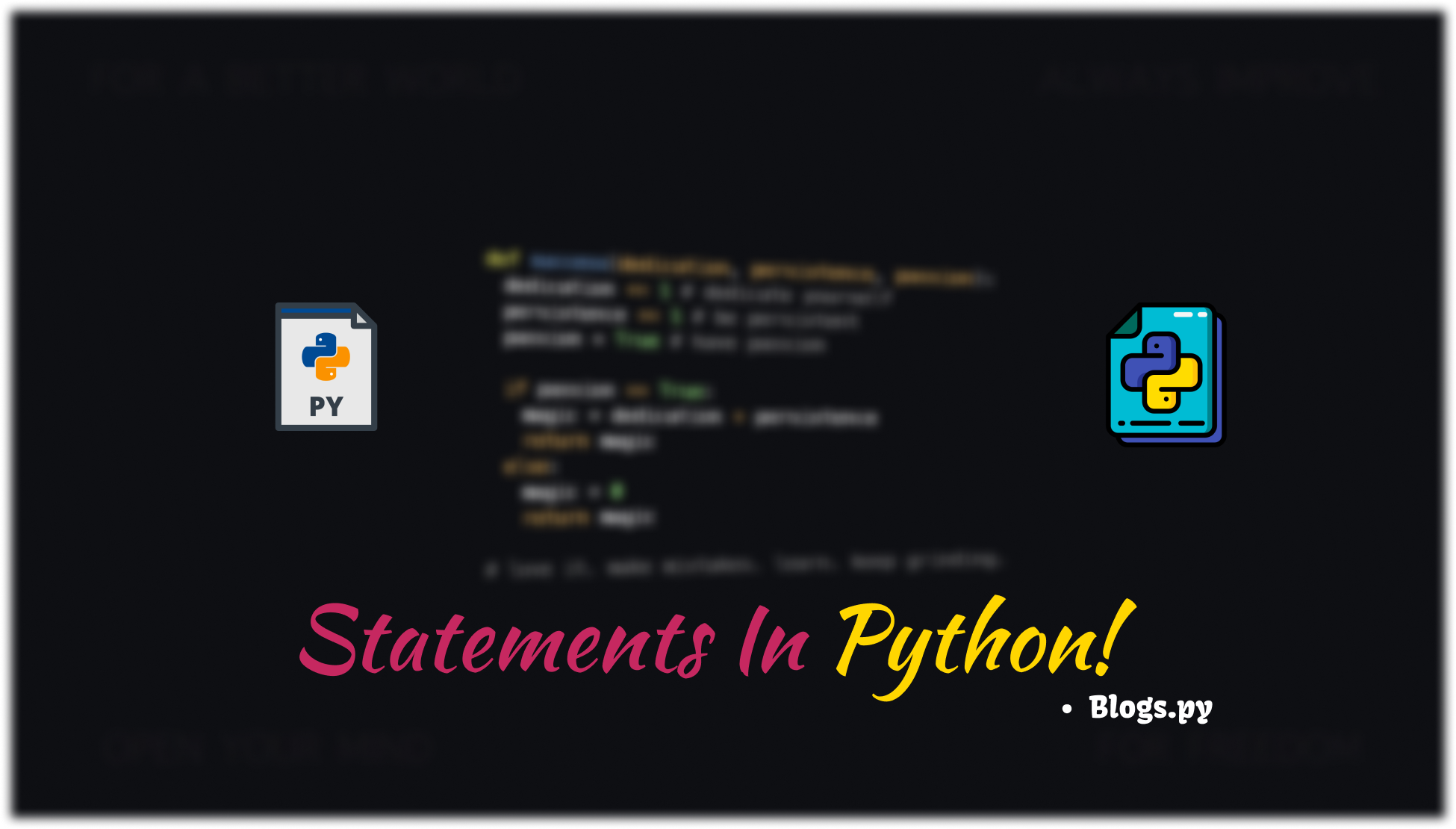Statements in Python
 Vismaya Prasad
Vismaya Prasad
In Python, statements are individual instructions or commands that the interpreter can execute. They are the basic building blocks of a program.
Examples are :
Assignment statement
variable = value
x = 5Expression statement
answer = 10 + 2
- Print statement
print("Hello all")
These are some of the statements in Python. There are many more, like break, continue, pass, if, else, elif, statements related to file handling, class and object definitions etc.
The print() and input() functions are fundamental in Python for displaying output to the console and obtaining input from the user, respectively.
- The
print()function is used to display output to the console.
print("Hello all, let's start coding")
# prints: hello all, let's start coding to the console
- The
input()function is used to read input from the user, which is always read as a string.
name = input("Enter your name: ")
print("Your name is",name)
Output
Enter your name: Akash
Your name is Akash
When you run this code, it will prompt you to enter your name and print display it to output.
These are the simple Python statements with which we can start coding. We have already installed Python, so we can start coding from the next tutorial.
Stay Tuned !!!
Subscribe to my newsletter
Read articles from Vismaya Prasad directly inside your inbox. Subscribe to the newsletter, and don't miss out.
Written by

Vismaya Prasad
Vismaya Prasad
I am currently a Computer Science Engineering student focusing on backend development using Django. I usually code in Python. I am also interested technical writing and blogging.